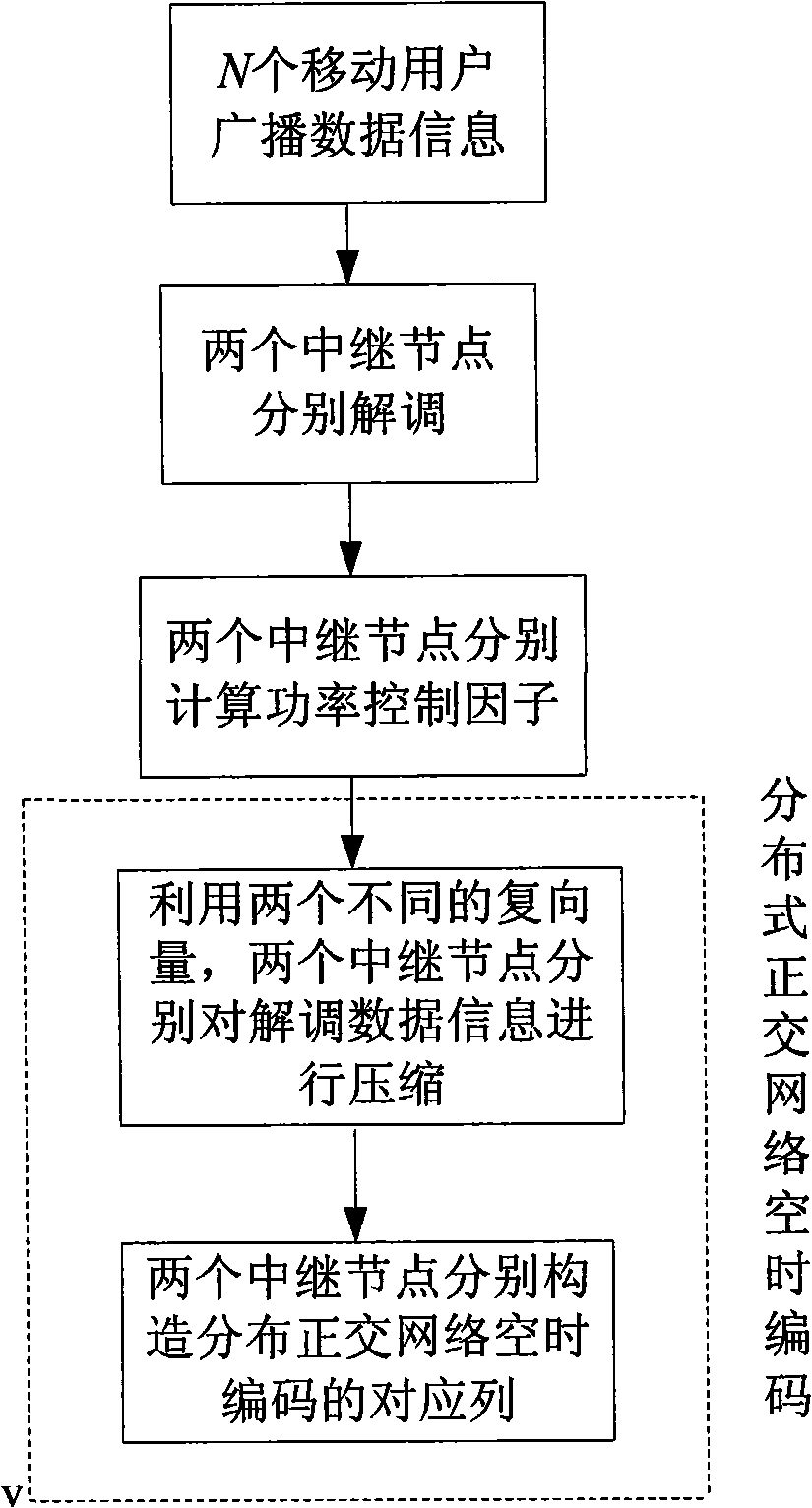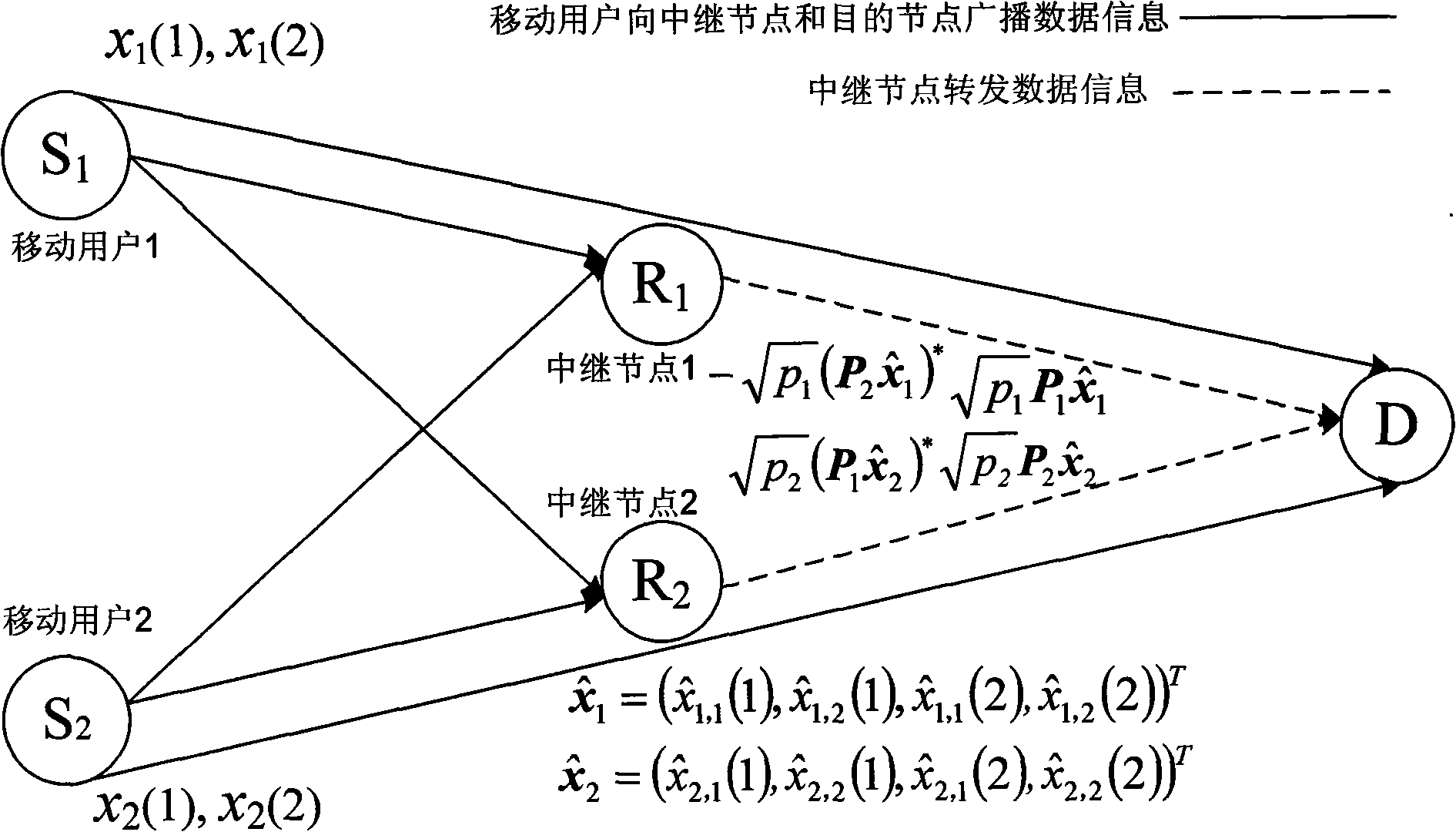Time space encoding method of distributed quadrature network
A space-time coding, orthogonal network technology, applied in the direction of preventing/detecting errors through diversity reception, electrical components, digital transmission systems, etc., to achieve the effect of large coding gain
- Summary
- Abstract
- Description
- Claims
- Application Information
AI Technical Summary
Problems solved by technology
Method used
Image
Examples
Embodiment 1
[0073] refer to figure 2 and image 3 , in two mobile users, two relay nodes, one destination node, and the distributed orthogonal network space-time coding method under the situation of L=2, carry out according to the following steps:
[0074] Step 1, N=2 mobile users broadcast data information to two relay nodes and the destination node with L=2 symbol periods;
[0075] Step 2, the first relay node R 1 The received data information is demodulated according to the maximum likelihood method to obtain demodulated data
[0076] Step 3, the second relay node R 2 The received data information is demodulated according to the maximum likelihood method to obtain demodulated data
[0077] Step 4, assuming that the i-th mobile user broadcasts data x to the two relay nodes and the destination node in the l-th symbol period i (l) From the modulation symbol set Ω, calculate the Cartesian product Ω of the modulation symbol set Ω N×L =Ω 4 , i=1,2, l=1,2. from Ω 4 Randomly take...
Embodiment 2
[0107] refer to figure 2 and Figure 4 , in the case of 2 mobile users, 2 relay nodes, and 1 destination node, and L=4, the distributed orthogonal network space-time coding method is carried out according to the following steps.
[0108] In the first step, N=2 mobile users broadcast data information to two relay nodes and the destination node with L=4 symbol periods;
[0109] In the second step, the first relay node R 1 The received data information is demodulated according to the maximum likelihood method to obtain demodulated data
[0110] The third step, the second relay node R 2 The received data information is demodulated according to the maximum likelihood method to obtain demodulated data
[0111] The fourth step, assuming that the i-th mobile user broadcasts the data x to the two relay nodes and the destination node in the l-th symbol period i (l) From the modulation symbol set Ω, calculate the Cartesian product Ω of the modulation symbol set Ω N×L =Ω 8 , w...
PUM
 Login to View More
Login to View More Abstract
Description
Claims
Application Information
 Login to View More
Login to View More - R&D
- Intellectual Property
- Life Sciences
- Materials
- Tech Scout
- Unparalleled Data Quality
- Higher Quality Content
- 60% Fewer Hallucinations
Browse by: Latest US Patents, China's latest patents, Technical Efficacy Thesaurus, Application Domain, Technology Topic, Popular Technical Reports.
© 2025 PatSnap. All rights reserved.Legal|Privacy policy|Modern Slavery Act Transparency Statement|Sitemap|About US| Contact US: help@patsnap.com



